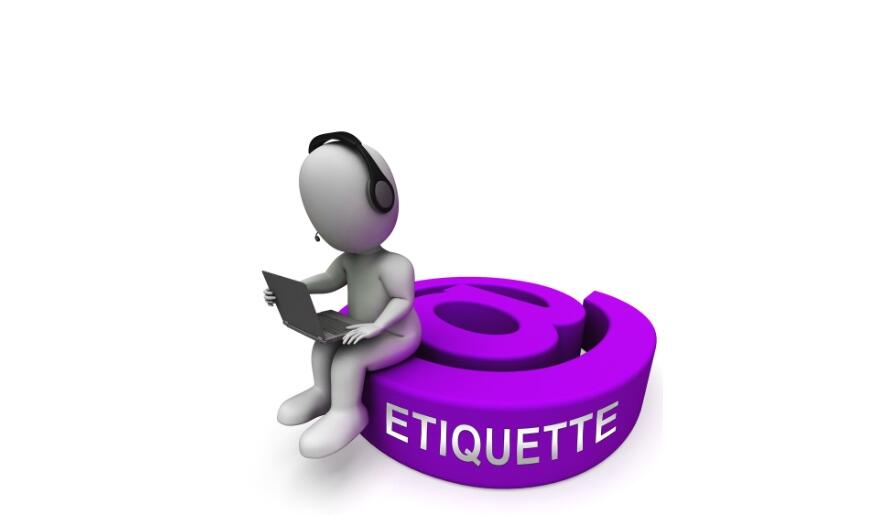Inclusive communication in the workplace plays a pivotal role in creating a diverse and supportive environment for all team members. It goes beyond simply using respectful language and encompasses various elements such as understanding different cultural communication styles, actively listening, and promoting different perspectives. Organizations can cultivate innovation, collaboration, engagement, and a sense of belonging by prioritizing inclusive communication in the workplace.
Table of Contents
Key Takeaways:
- Effective workplace communication is crucial for fostering inclusivity at work.
- Inclusive communication in the workplace goes beyond respectful language and involves understanding different cultural communication styles.
- Prioritizing inclusive communication practices can lead to increased innovation, collaboration, engagement, and a sense of belonging.
- Organizations should actively listen, provide accommodations, and encourage diverse perspectives to foster inclusive communication.
- Inclusive communication in the workplace benefits employees and companies, leading to improved decision-making and problem-solving.
The Importance of Inclusive Communication in the Workplace
Inclusive communication is crucial in creating a positive and supportive workplace environment where every employee feels valued, welcomed, and empowered to contribute fully. Organizations can reap many benefits and enhance their overall success by prioritizing inclusive communication practices.
When employees feel included, they are more likely to stay with the company and be engaged in their work. Inclusive communication fosters a sense of belonging and increases employee satisfaction, leading to higher retention rates. This is especially important for diverse teams, as inclusive communication allows individuals from different backgrounds and identities to feel that their perspectives are valued and respected.

Related Blog
Master Communication in a Diverse Workplace: A Guide
Furthermore, inclusive communication improves decision-making, problem-solving, and innovation within teams. When all team members have an equal opportunity to contribute their ideas and viewpoints, a more robust and diverse range of perspectives can be considered. This enhances creativity, promotes critical thinking, and leads to more effective and innovative solutions.
Organizations prioritizing inclusive communication practices also benefit from attracting and retaining diverse talent more effectively. In today’s competitive job market, candidates are increasingly drawn to companies prioritizing inclusivity and creating an environment where everyone can thrive. Inclusive communication practices are a powerful tool for building a positive employer brand, enhancing the organization’s reputation, and showcasing a commitment to diversity, equity, and inclusion.
Benefits of Inclusive Communication in the Workplace:
- Increased employee engagement and satisfaction
- Improved decision-making and problem-solving
- Enhanced creativity and innovation
- Higher retention rates and reduced turnover
- Attracting and retaining diverse talent more effectively
- Improved employer brand and reputation
| Benefits | Description |
|---|---|
| Increased Employee Engagement and Satisfaction | Inclusive communication fosters a sense of belonging, making employees feel valued and heard. |
| Improved Decision-Making and Problem-Solving | Diverse perspectives and ideas are considered, leading to more comprehensive and effective solutions. |
| Enhanced Creativity and Innovation | Inclusive communication promotes an environment where diverse ideas can flourish and inspire new innovations. |
| Higher Retention Rates and Reduced Turnover | When employees feel included, they are more likely to remain with the company and contribute to its success. |
| Attracting and Retaining Diverse Talent | Companies that prioritize inclusive communication practices are more appealing to a diverse pool of candidates. |
| Improved Employer Brand and Reputation | Organizations that value inclusive communication are seen as forward-thinking and inclusive. |
Overall, inclusive communication practices are essential for creating a supportive and inclusive workplace culture. By embracing inclusive communication, organizations can unlock the full potential of their diverse workforce, drive innovation, and establish themselves as leaders in fostering workplace inclusion.
Strategies for Fostering Inclusive Communication
To foster inclusive communication in the workplace, organizations can implement several strategies. These strategies are crucial for promoting a diverse workforce, enhancing employee engagement, driving innovation, improving decision-making, and enhancing reputation.
Raising Awareness
One of the key strategies is raising awareness about the importance of inclusion. Organizations can create a more inclusive culture by educating employees about the benefits of inclusivity and providing training on inclusive language and behavior.
Understanding Communication Styles
Organizations should also try to understand their employees’ communication styles and needs. Recognizing that individuals may have different preferences for communication, such as email, face-to-face meetings, or video conferences, fosters inclusivity and ensures that everyone feels comfortable and heard.
Highlighting Inclusive Language
Inclusive language plays a vital role in fostering inclusive communication. This includes using gender-neutral terms, avoiding stereotypes and culturally disrespectful phrases, and using person-first alternatives for ableist language. By providing examples and guidelines for inclusive language, organizations can encourage employees to communicate more inclusively.
Involving the Entire Organization
Building an inclusive culture requires the involvement of the entire organization. This means encouraging all employees to contribute their ideas and perspectives and valuing diverse voices. Organizations can enhance inclusivity and improve team performance by creating opportunities for collaboration and shared decision-making.
Ongoing Guidance and Training
Organizations should provide ongoing guidance and training to consistently apply inclusive communication practices. This allows employees to stay updated on best practices, learn from any mistakes, and continuously improve their communication skills.
Modeling Inclusive Communication
Leaders within the organization should model inclusive communication daily. When leaders demonstrate inclusive behavior, such as active listening, respect for diverse perspectives, and open dialogue, it sets the tone for the entire organization.
Role of HR and Internal Comms
Human resources (HR) and internal communications teams are crucial in promoting inclusive communication. They can guide and support employees, create communication channels that facilitate inclusivity, and ensure that inclusive communication practices are embedded in organizational policies and procedures.
Creating Inclusive Language Guidelines
Creating inclusive language guidelines is vital in promoting inclusive communication in the workplace. These guidelines help ensure that language used within the organization is free from exclusivity, stereotypes, and discriminatory terms. By using inclusive language examples, substituting stereotypes, and providing ableist language alternatives, organizations can foster a more welcoming and respectful environment for all employees.

Inclusive language promotes equity, diversity, and inclusion by acknowledging and respecting the identities and experiences of individuals. It avoids using language that may marginalize or exclude certain groups. Here are some key aspects to consider in creating inclusive language guidelines:
Using Inclusive Language Examples
One important aspect of inclusive language guidelines is providing examples that demonstrate the use of inclusive language. These examples help employees understand how to express themselves inclusively and respectfully. Gender-neutral terms, such as “they” instead of “he” or “she,” can be used to promote inclusivity in writing and communication.
Substituting Stereotypes and Culturally Disrespectful Phrases
It is crucial to avoid using stereotypes and culturally disrespectful phrases that perpetuate bias and discrimination. Inclusive language guidelines should provide alternatives to these problematic terms and encourage employees to use language that acknowledges and values diversity. For example, instead of using stereotypes like “aggressive” to describe assertive behavior, the guidelines can suggest using terms like “confident” or “assertive” instead.
Using Person-First Alternatives for Ableist Language
Language guidelines should also address ableist language, which could unintentionally perpetuate stereotypes and contribute to the marginalization of people with disabilities. Inclusive language guidelines should encourage using person-first language, which places the individual before their disability. For example, using “person with a disability” instead of “disabled person” emphasizes personhood first and reduces stigma and dehumanization.
Regularly reviewing and updating language guidelines is crucial to reflect current best practices and remain inclusive. This includes incorporating employee feedback and staying informed about evolving language conventions and cultural sensitivities. By creating and adhering to inclusive language guidelines, organizations can foster a more inclusive and welcoming workplace environment for everyone.
| Inclusive Language Guideline | Exclusive Language | Inclusive Language |
|---|---|---|
| Racial or Ethnic Identity | Colored, Foreigner | Person of Color, International |
| Gender Identity | Ladies and Gentlemen | Everyone, Folks, All |
| Physically Disabled | Handicapped, Invalid | Person with a Disability |
| Mental Health | Crazy, Psycho | Person with a Mental Health Condition |
Cultivating Empathy and Perspective-Taking
Cultivating empathy is essential for promoting inclusive communication in the workplace. It allows individuals to understand and connect with others’ experiences, fostering a sense of unity and collaboration. To cultivate empathy, perspective-taking exercises can encourage team members to step into others’ shoes and gain a deeper understanding of their perspectives.
One effective technique is role-playing with reversed statuses. Team members can simulate different roles within the organization, experiencing firsthand the challenges and obstacles their colleagues face. This exercise builds empathy and promotes a better understanding of diverse roles and responsibilities within the team.

Another powerful exercise is sharing microaggressions faced by team members. By creating a safe and supportive environment where individuals can openly discuss their experiences, team members can gain insight into the subtle discrimination that others may encounter. This exercise promotes awareness, empathy, and a commitment to fostering inclusion in communication.
“Empathy is seeing with the eyes of another, listening with the ears of another, and feeling with the heart of another.”
Alfred Adler
Through these perspective-taking exercises, team members develop a heightened sense of empathy, allowing them to communicate more inclusively. By imagining and understanding others’ experiences, they can address their needs and concerns more effectively, ultimately creating a more supportive and inclusive workplace environment.
Example Perspective-Taking Exercise
Role-playing exercise: Teams are divided into pairs. Each pair is assigned a scenario involving a fictitious workplace conflict. One team member assumes the role of the aggrieved party, while the other takes on the manager’s role. The exercise requires participants to empathize with their assigned roles, considering both parties’ emotions, concerns, and perspectives. Afterward, team members share their insights and reflect on the importance of empathy and perspective-taking in resolving workplace conflicts.
Benefits of Cultivating Empathy and Perspective-Taking
- Fosters a culture of inclusivity and understanding
- Enhances teamwork and collaboration
- Reduces conflicts and promotes conflict resolution
- Improves communication and relationship-building
- Leads to more effective problem-solving and decision-making
Summary
Cultivating empathy through perspective-taking exercises is a transformative practice that promotes inclusive communication. By stepping into others’ shoes and sharing experiences, individuals gain a deeper understanding of their colleagues’ perspectives and challenges. This cultivates empathy, fosters unity, and drives more inclusive and empathetic communication within the workplace.
Auditing Communication Touchpoints
Auditing communication touchpoints is crucial in fostering inclusive communication in the workplace. It involves reviewing various communication channels and analyzing the language used to identify and eliminate exclusionary terms. By conducting a thorough audit, organizations can ensure that their communication is free from stereotypes, prejudice, or discriminatory language.
All areas where communication occurs during the audit should be reviewed, including job postings, internal newsletters, email communications, and intranet messaging. This comprehensive approach allows organizations to assess the inclusivity of their communication across different touchpoints.
Language plays a significant role in shaping workplace culture and can profoundly impact employee experience. By reviewing language for exclusionary terms, organizations can create a more inclusive environment where everyone feels respected and valued.
When auditing communication touchpoints, it is important to challenge phrases and words that may reinforce biases or exclude certain individuals or groups. This can be achieved by questioning specific language choices’ underlying assumptions and connotations.
Additionally, organizations should analyze relevant metrics to evaluate the effectiveness of their inclusive communication practices. This can involve tracking employee feedback, engagement, and perception of workplace inclusion. By regularly assessing these metrics, organizations can identify areas of improvement and implement targeted strategies to enhance their inclusive communication efforts.
Ultimately, auditing communication touchpoints and reviewing language for exclusionary terms is a proactive measure demonstrating a commitment to fostering a diverse and inclusive workplace. It helps create an environment where all employees feel valued, heard, and respected.
| Exclusionary Language | Inclusive Language |
|---|---|
| Gentleman’s agreement | Informal agreement |
| Chairman | Chair or Chairperson |
| Hispanic community | Latinx community |
| Disabled person | Person with a disability |
Inclusive Communication in the Hiring Process
Inclusive communication is vital to the hiring process, setting the foundation for a diverse and inclusive workplace. By incorporating effective strategies during the onboarding experience, organizations can create an inclusive environment where all employees feel valued and welcomed.
One crucial aspect of inclusive communication in hiring is considering candidates’ preferred names and pronouns. This simple gesture demonstrates respect for the individual’s gender identity and fosters an inclusive atmosphere. Similarly, providing personalized welcome items, such as a tailored welcome package or a virtual onboarding kit, can make new hires feel seen, valued, and appreciated.
Organizations need to develop a strategic onboarding plan that includes inclusive communication practices. Clearly defining the onboarding process, sharing necessary information, and offering opportunities for open dialogue helps new employees feel supported and informed. Organizations can ensure a smooth transition and reduce any miscommunications or confusion by setting clear expectations and providing necessary resources.
Implementing inclusive communication practices during the hiring process showcases a commitment to diversity and inclusion. It sends a powerful message that every individual’s unique identity and perspective are valued within the organization. This approach attracts a diverse pool of talent and increases employee retention, as new hires are more likely to stay and thrive in an inclusive workplace.
Benefits of Inclusive Communication in the Hiring Process
| Benefits | Description |
|---|---|
| Enhanced candidate experience | A welcoming and inclusive onboarding experience leaves a positive impression on new hires and improves their engagement and satisfaction. |
| Increased employee retention | An inclusive hiring process makes new employees feel valued and included, reducing turnover and fostering long-term commitment. |
| Improved team collaboration | By prioritizing inclusive communication in hiring, organizations create a collaborative environment where diverse perspectives and ideas are encouraged and appreciated. |
| Enhanced organizational reputation | An inclusive hiring process demonstrates the organization’s commitment to diversity and inclusion, enhancing its reputation as an employer of choice. |
By implementing inclusive communication strategies throughout the hiring process, organizations can cultivate a culture of inclusivity and set the stage for effective communication and collaboration among team members.

Fostering inclusive communication in the hiring process is just the beginning. In the following section, we will explore the importance of feedback and check-ins in promoting inclusive communication within the workplace.
The Role of Feedback and Check-Ins
Feedback and check-ins are essential components of fostering inclusive communication in the workplace. They contribute to creating a safe and supportive environment where employees feel comfortable expressing their thoughts, ideas, and concerns. By encouraging open and honest dialogue, organizations can cultivate psychological safety, which fosters inclusive communication.
Employee check-ins and anonymous surveys are effective channels for creating a safe space for feedback. These platforms allow team members to provide input without fear of judgment or repercussions. By creating opportunities for employees to share their experiences, organizations can gain valuable insights and identify areas for improvement.
Leaders play a crucial role in promoting inclusive communication through feedback and check-ins. Leaders must actively listen to their employees, demonstrating their opinions and perspectives are valued. Leaders can commit to inclusivity and continuous improvement by acting on suggestions and feedback.
“Feedback is a gift.”
By embracing this mindset, organizations can create a culture that values feedback and seeks diverse perspectives. Honest and constructive feedback can lead to positive changes, fostering an environment where all employees feel heard and respected.
Effective feedback and check-ins also contribute to employee growth and development. By providing regular opportunities for communication, organizations can support individual progress and ensure that all employees have a chance to voice their ideas, concerns, and aspirations. This practice not only helps build stronger relationships between employees and their managers but also increases engagement and job satisfaction.
To summarize, feedback and check-ins are vital in promoting inclusive communication. By creating a safe space for dialogue, organizations can foster psychological safety, encourage honest and open communication, and empower employees to contribute their best. Through this continuous feedback and dialogue, organizations can build a culture of inclusivity and create a workplace where all voices are valued and heard.
The Role of Senior Leadership
Senior leadership is critical in championing inclusive communication and embedding diversity, equity, and inclusion (DEI) in the organization’s culture. Their commitment and active involvement are essential for creating a truly inclusive workplace where all employees feel valued and included.
To drive change, having a dedicated DEI champion who can spearhead the DEI strategy within the organization is beneficial. This individual can provide guidance, support, and expertise to help shape and implement inclusive communication practices.
However, promoting inclusive communication should not solely rest on the DEI champion. Senior leaders across all departments need to speak up for change and work closely with the HR department to ensure that DEI is integrated into all aspects of the business.
Senior leaders can set an example by modeling inclusive communication behaviors and fostering an environment where all voices are heard. By actively listening to diverse perspectives and valuing different experiences, senior leaders can create a culture of respect and open dialogue.
Embedding DEI in the organization’s culture requires consistent effort and ongoing commitment. Senior leaders should prioritize DEI initiatives, allocate resources, and regularly evaluate progress. Making DEI an integral part of the organization’s values and vision becomes ingrained in the fabric of the workplace.
When senior leadership actively promotes inclusive communication and embeds DEI in the organization’s culture, it creates a work environment where employees feel valued, respected, and included. This fosters greater collaboration, drives innovation, and enhances employee engagement.
Formalizing Inclusive Communication Practices
To promote an inclusive and welcoming work environment, organizations must take the necessary steps to formalize inclusive communication practices. One key aspect of this process is assessing and eliminating exclusionary language in the workplace. By prioritizing the use of inclusive language that is free from stereotypes, prejudice, or discriminatory words and tones, organizations can create a safe and comfortable workplace for all employees.
Regularly reviewing and challenging phrases and words that may reinforce biases is essential to this process. By actively seeking out and eliminating exclusionary terms, organizations can demonstrate their commitment to creating an inclusive culture.
Inclusive language plays a vital role in fostering inclusivity and making all employees feel respected and valued. Organizations should provide guidance and training to ensure that everyone understands the importance of inclusive language and knows how to incorporate it into daily communication.
Benefits of Formalizing Inclusive Communication Practices
Formalizing inclusive communication practices has several benefits for both employees and organizations:
- Promotes a sense of belonging: Inclusive language creates an environment where all employees feel respected and valued, fostering a sense of belonging.
- Enhances collaboration: Inclusive communication encourages diverse perspectives, leading to more effective collaboration and problem-solving.
- Improves productivity: Inclusive communication practices contribute to a positive work environment, increasing productivity and employee engagement.
- Attracts and retains diverse talent: Organizations prioritizing inclusive communication practices are more likely to attract and retain diverse talent, enhancing their reputation as an inclusive employer.
| Benefits of Formalizing Inclusive Communication Practices |
|---|
| Promotes a sense of belonging |
| Enhances collaboration |
| Improves productivity |
| Attracts and retains diverse talent |
“Inclusive communication is not only about the words we use, but also about creating an environment where all employees feel respected and valued. By formalizing inclusive communication practices, organizations can foster a workplace that celebrates diversity and promotes a sense of belonging.”
Amy Johnson, Diversity and Inclusion Specialist
Prioritizing Employee Growth and Development
Prioritizing employee growth and development is key to fostering inclusive communication in the workplace. Organizations create an environment where creativity and innovation can thrive by investing in diverse hires and providing them with the necessary support and resources. Furthermore, offering opportunities for professional development and advancement to all employees, regardless of their background, contributes to a more inclusive and equitable workplace.
When organizations prioritize employee growth and development, they send a powerful message that every employee is valued and has the potential to grow within the company. This helps individuals enhance their skills and knowledge and strengthens their sense of belonging and engagement.
Investing in diverse hires enriches the talent pool and brings in fresh perspectives and ideas. By nurturing the growth and development of diverse employees, organizations can tap into their unique experiences and backgrounds, fueling innovation and driving business success.
Benefits of Prioritizing Employee Growth and Development:
- Enhanced employee engagement and satisfaction.
- Increased retention of diverse talent.
- Improved productivity and performance.
- Strengthened teamwork and collaboration.
- Creation of a learning culture within the organization.
- Development of future leaders from diverse backgrounds.
By investing in employee growth and development, organizations foster inclusive communication and create a pathway for individuals to reach their full potential. This, in turn, contributes to a more diverse, productive, and successful workplace.
| Benefits of Prioritizing Employee Growth and Development |
|---|
| Enhanced employee engagement and satisfaction |
| Increased retention of diverse talent |
| Improved productivity and performance |
| Strengthened teamwork and collaboration |
| Creation of a learning culture within the organization |
| Development of future leaders from diverse backgrounds |
Conclusion
Inclusive communication is a fundamental aspect of fostering a diverse and inclusive workplace. It goes beyond using respectful language and encompasses various strategies such as understanding the audience, highlighting inclusive language, involving the entire organization, and providing ongoing guidance. Organizations can further promote inclusive communication practices by creating inclusive language guidelines, cultivating empathy, and auditing communication touchpoints.
Investing in inclusive communication is essential as it unlocks the full potential of a diverse workforce. Employees who feel valued, respected, and included are more likely to be engaged, stay with the company longer, and contribute to a more innovative and collaborative workplace environment. Prioritizing inclusive communication practices also enhances an organization’s reputation and brand image, attracting and retaining diverse talent more effectively.
Organizations should prioritize inclusive communication and integrate it into their culture to create an inclusive workplace where all employees thrive. Senior leadership plays a crucial role in championing diversity, equity, and inclusion (DEI) efforts, collaborating with HR to embed DEI in all aspects of the business. Through formalizing inclusive communication practices, organizations can create a safe and comfortable workplace where all employees feel respected, valued, and empowered to bring their authentic selves to work.
In conclusion, by fostering inclusive communication practices, organizations can create a workplace where every employee feels supported, included, and able to contribute fully. Through inclusive communication, organizations can unlock the true potential of their diverse workforce, driving innovation, collaboration, and success.
FAQ
Why is inclusive communication important in the workplace?
Inclusive communication is important in the workplace because it ensures that all employees, regardless of their background or identity, feel valued, welcomed, and able to contribute fully. When employees feel included, they are more likely to stay with the company and be engaged in their work. Inclusive communication also leads to improved decision-making, problem-solving, and innovation.
What are the benefits of inclusive communication?
Inclusive communication in the workplace has several benefits, including increased innovation, collaboration, engagement, and a sense of belonging. Companies that prioritize inclusive communication practices attract and retain diverse talent more effectively, enhance employee engagement and satisfaction, and improve their reputation and brand image.
What strategies can organizations use to foster inclusive communication?
To foster inclusive communication in the workplace, organizations can implement several strategies. These include raising awareness about the importance of inclusion, understanding the audience’s communication styles and needs, highlighting inclusive language, involving the entire organization in building an inclusive culture, and providing ongoing guidance and training.
How can organizations create inclusive language guidelines?
Creating inclusive language guidelines is an important step in promoting inclusive communication. It involves using inclusive language examples to replace exclusive terms, avoiding stereotypes and culturally disrespectful phrases, and using person-first alternatives for ableist language. It is essential to regularly review and update language guidelines to ensure they reflect current best practices and promote a more welcoming and inclusive environment.
How can organizations cultivate empathy and perspective-taking?
Cultivating empathy through perspective-taking exercises is a powerful way to promote inclusive communication. This involves techniques such as role-playing with reversed statuses and sharing microaggressions faced to create awareness and understanding among team members. These exercises bring new insights and can lead to a mindset shift that fosters inclusion and empathy in communication.
How can organizations audit their communication touchpoints?
Auditing communication touchpoints is important to identify and eliminate exclusionary language. This includes reviewing all areas where communication occurs, such as job postings and intranet messaging, and analyzing metrics to evaluate the effectiveness of inclusive communication practices. It is crucial to challenge phrases and words that usually go unchallenged and ensure that language used in the workplace is free from stereotyped, prejudiced, or discriminatory words, phrases, and tones.
How can inclusive communication be integrated into the hiring process?
Inclusive communication should begin with the hiring process. Organizations should make a conscious effort to create an inclusive onboarding experience by considering candidates’ preferred names and pronouns, providing personalized welcome items, and developing a strategic onboarding plan. An inclusive hiring process sets the tone for a diverse and inclusive workplace and increases employee retention.
What is the role of feedback and check-ins in promoting inclusive communication?
Feedback and check-ins play a crucial role in promoting inclusive communication. Creating a safe space for feedback ensures that employees feel comfortable asking questions, expressing their thoughts and ideas, and providing honest input. This can be facilitated through employee check-ins, anonymous surveys, or other channels that encourage open and honest dialogue. Leaders should actively listen to their employees and act on suggestions and feedback to create a culture of inclusivity.
What is the role of senior leadership in promoting inclusive communication?
Senior leadership plays a crucial role in promoting inclusive communication and embedding diversity, equity, and inclusion (DEI) in the organization’s culture. Having a DEI champion can help spearhead the DEI strategy, but it is essential for senior leaders to speak up for change and work closely with HR to ensure that DEI is integrated into all aspects of the business. When DEI becomes ingrained in the culture, it creates a truly equitable, diverse, and inclusive workplace where all employees feel valued and included.
How can organizations formalize inclusive communication practices?
Formalizing inclusive communication practices involves assessing and eliminating exclusionary language in the workplace. Organizations should prioritize the use of inclusive language that is free from stereotypes, prejudice, or discriminatory words and tones. This includes regularly reviewing and challenging phrases and words that may reinforce biases. Creating a safe and comfortable workplace through inclusive language contributes to a more inclusive culture where all employees feel respected and valued.
How can organizations prioritize employee growth and development to foster inclusive communication?
Prioritizing employee growth and development is another way to foster inclusive communication. By investing in diverse hires and providing them with the necessary support and resources, organizations create an environment where creativity and innovation can thrive. Offering opportunities for professional development and advancement to all employees, regardless of their background, contributes to a more inclusive and equitable workplace.



